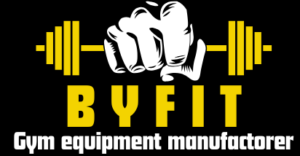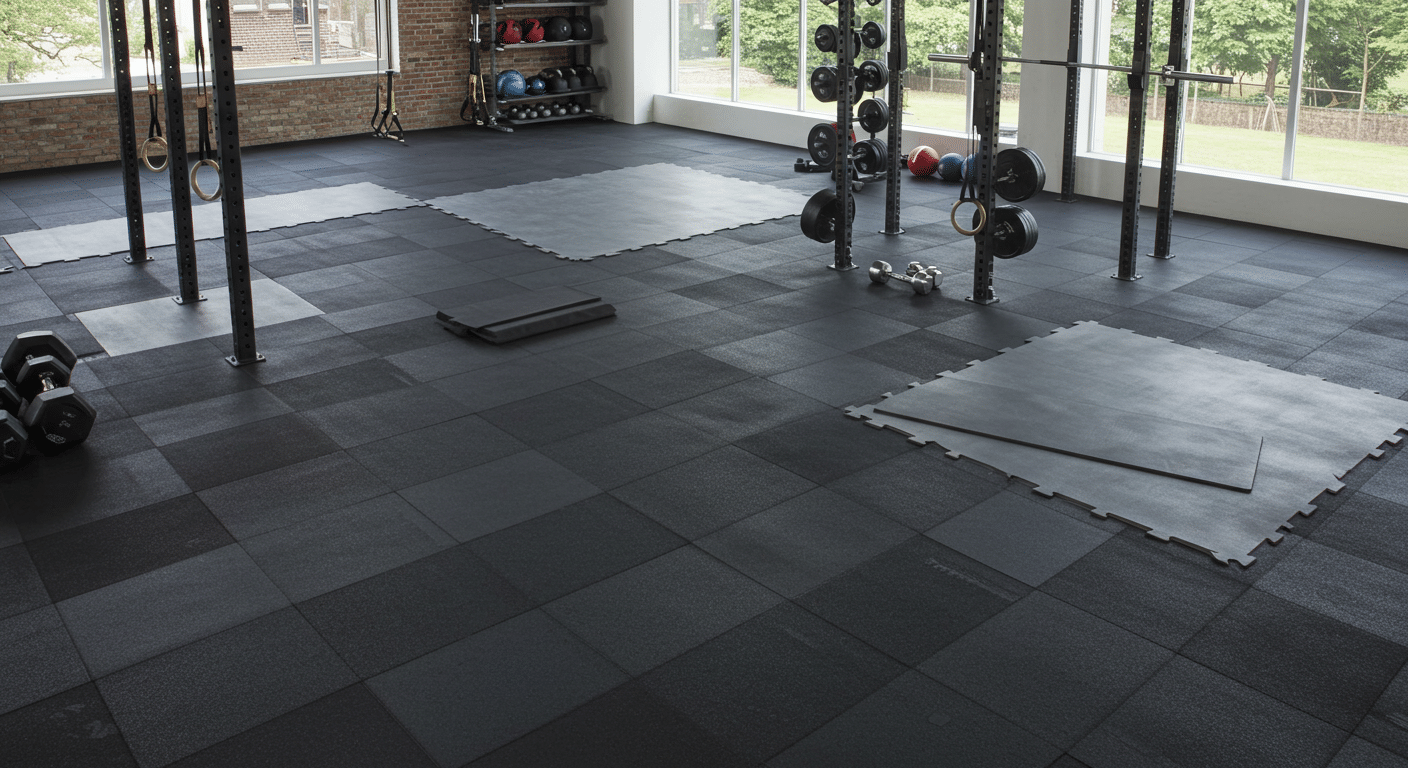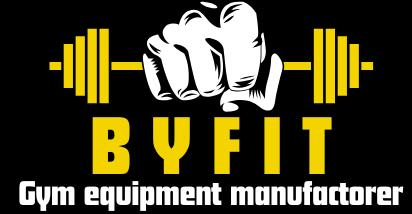Struggling to decide on the perfect floor for your home gym? Overwhelmed by the choices and unsure where to start?
Problem, Agitate, Solve.
Rubber flooring is a top choice for home gym gyms. It’s durable, absorbs shock, and protects your subfloor. For a balance of cost and easy installation, consider interlocking rubber tiles.
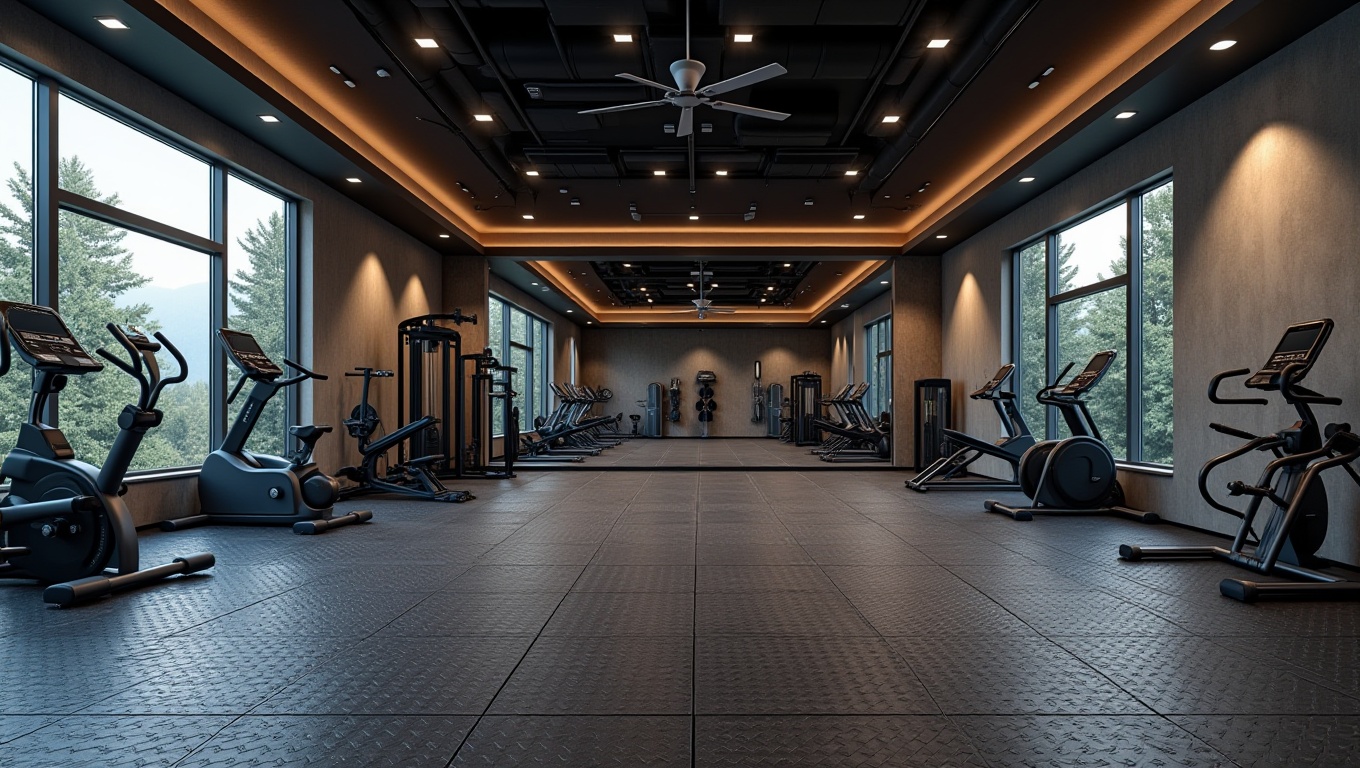 Home Gym Flooring Overview
Home Gym Flooring Overview
Choosing the right flooring sets the foundation for a safe, effective, and enjoyable workout space. Let’s explore the options so you can begin your home gym.
What Factors Should You Consider When Choosing Home Gym Flooring?
Feeling lost in a sea of flooring options, each promising to be the "best" for your home gym? Unsure of the key features1?
Key factors include the type of exercise2 you’ll do, your budget, the size of your gym, and personal preference. All impact the best flooring for your needs3.
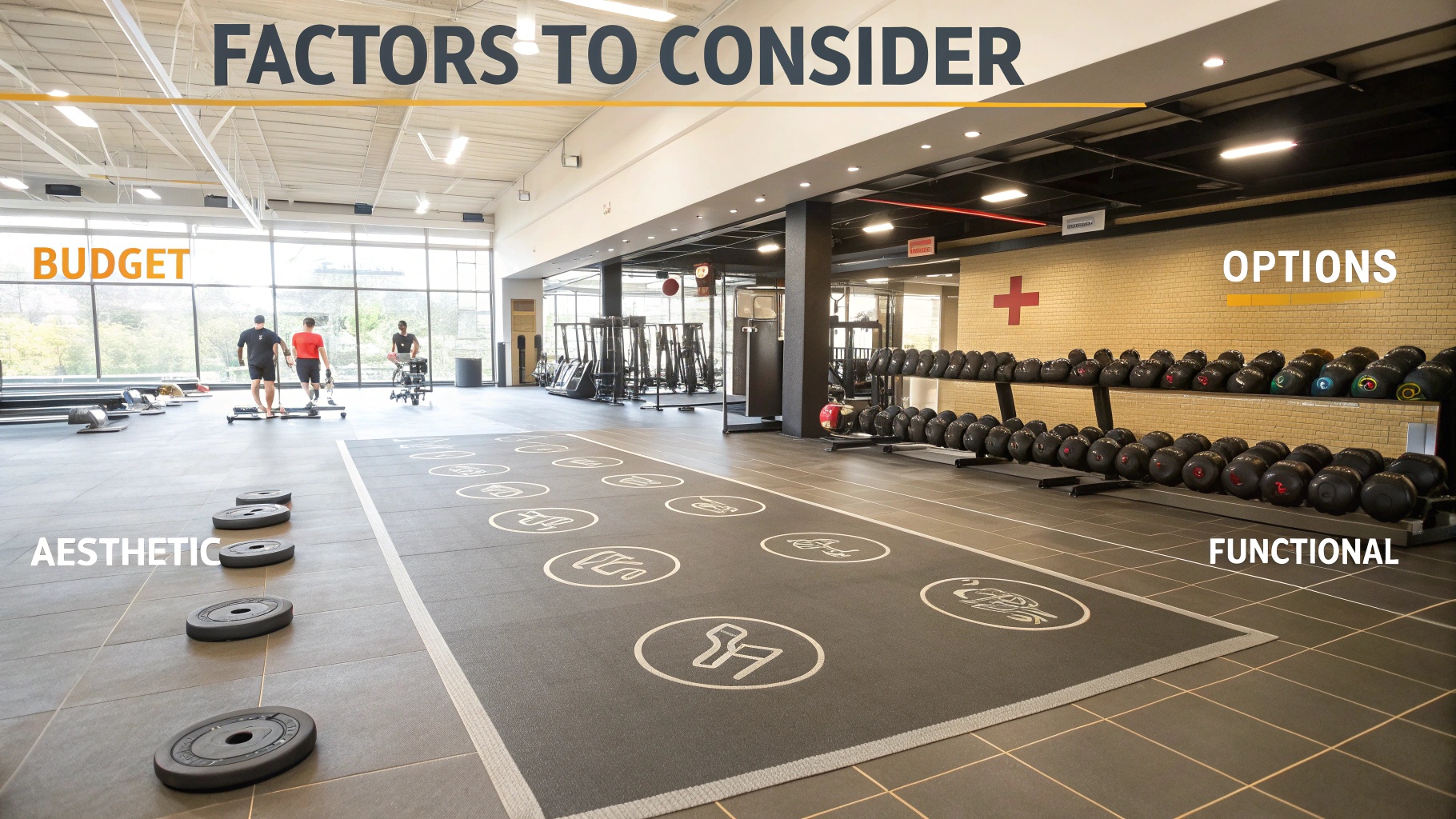 Factors to Consider
Factors to Consider
Let’s break down these crucial considerations to simplify your decision-making process. This is just like choosing the right equipment. You wouldn’t buy a treadmill if you only lift weights.
What Type of Exercise Will You Be Doing?
- Understanding Exercise Impact: Different activities require different levels of support and cushioning from your flooring. High-impact exercises demand more shock absorption.
- Specific Exercise Needs:
- High-Impact Activities (HIIT, Plyometrics)4: Prioritize flooring that absorbs shock to protect your joints.
- Weightlifting4: Choose durable flooring that can withstand heavy weights and protect your subfloor.
- Yoga/Pilates5: Look for comfortable and cushioned flooring that provides good traction.
What Is Your Budget for Home Gym Flooring?
- Setting a Realistic Budget: Flooring prices vary significantly. Determine how much you’re willing to spend before you start shopping.
- Comparing Material Costs:
- Rubber Flooring6: Generally more expensive upfront, but offers excellent durability and longevity.
- Foam Tiles7: Typically the most budget-friendly option, but may need replacing more often.
- Carpet Tiles: Usually affordable and offer comfort, but not ideal for all exercise types.
- Vinyl Flooring8: A mid-range option in terms of price, offering good versatility and durability.
What Is the Size and Layout of Your Home Gym?
- Measuring Your Space9: Accurately measure the area where you’ll be installing the flooring to determine how much material you need.
- Considering Room Shape10:
- Small Spaces11: Interlocking tiles are easy to customize and install in limited areas.
- Large Spaces: Flooring rolls might be more cost-effective for covering expansive areas.
- Oddly Shaped Rooms: Tiles offer greater flexibility for cutting and fitting around corners and obstacles.
What Is Your Personal Style and Preference?
- Creating a Motivating Environment: Your gym should be a space that you enjoy spending time in. Choose flooring that aligns with your aesthetic preferences.
- Exploring Style Options:
- Rubber Flooring: Offers a classic, industrial look often found in professional gyms.
- Foam Tiles: Available in a wide variety of colors, allowing for creative designs and zoning.
- Carpet Tiles: Can add warmth and texture to your home gym, creating a more inviting atmosphere.
- Vinyl Flooring: Can mimic the look of natural materials like wood or stone, offering design versatility.
| Factor | Considerations |
|---|---|
| Exercise Type | High-impact (HIIT, plyometrics): Need shock absorption. Weightlifting: Need durability and protection for subfloor. Yoga/Pilates: Need comfort and cushioning. |
| Budget | Rubber: Can be more expensive, but very durable. Foam: Generally cheaper, but less durable. Carpet: Usually affordable, but not ideal for all activities. Vinyl: Mid-range price, good all-around option. |
| Gym Size | Small space: Tiles are easy to customize. Large space: Rolls might be more cost-effective. Oddly shaped space: Tiles offer more flexibility in cutting and fitting. |
| Style | Rubber: Industrial look. Foam: Wide variety of colors. Carpet: Can add warmth and texture. Vinyl: Can mimic wood or stone. Consider if you want a sleek, modern, or cozy feel. Think about colors that motivate you. |
What Are the Different Types of Home Gym Flooring Available?
Confused by the sheer number of flooring types, from rubber to foam, carpet to vinyl? Feeling overwhelmed?
Common home gym flooring options12 include rubber, foam, carpet, vinyl, and even wood. Each offers distinct benefits and drawbacks, catering to various exercise styles and budgets.
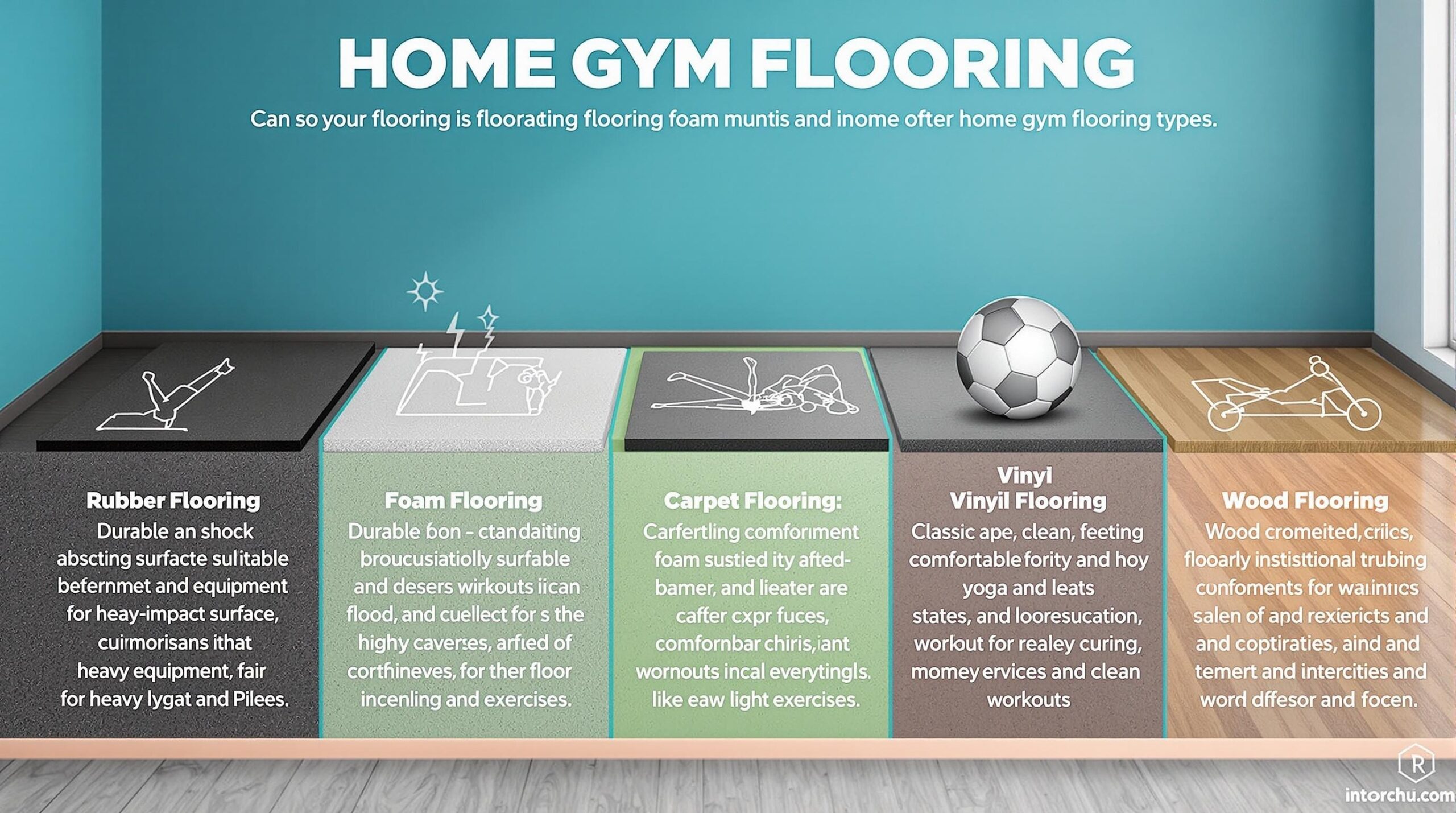 Types of Home Gym Flooring
Types of Home Gym Flooring
Let’s explore these options. We’ll help you find the perfect fit for your needs.
Is Rubber Flooring the Best Option for Home Gyms?
- Durability and Versatility: Rubber flooring is known for its exceptional durability, making it suitable for a wide range of activities, from weightlifting to high-impact workouts.
- Pros: Excellent shock absorption13, protects subfloor, long-lasting, easy to clean14.
- Cons: Can be expensive, heavy, may have an initial odor.
Why Choose Foam Tiles for Your Home Gym?
- Comfort and Ease of Installation: Foam tiles15 provide a comfortable, cushioned surface and are incredibly easy to install, thanks to their interlocking design.
- Pros: Affordable, comfortable, easy to install and replace, good for floor exercises.
- Cons: Not suitable for heavy weights, can dent easily, less durable than rubber16
Are Carpet Tiles a Good Choice for Home Gyms?
- Comfort and Noise Reduction17: Carpet tiles offer a comfortable surface for cardio and general fitness activities, and they also help to absorb sound.
- Pros: Comfortable, sound-absorbing18, available in various styles, relatively easy to clean.
- Cons: Not ideal for heavy weights, can stain, may not be as durable as other options.
Can You Use Vinyl Flooring in a Home Gym?
- Water Resistance and Maintenance: Vinyl flooring is water-resistant19 and easy to clean, making it a practical choice for home gyms, especially in basements.
- Pros: Water-resistant, slip-resistant options20 available, easy to install and maintain, versatile.
- Cons: Can be damaged by sharp objects, not as durable as rubber for heavy weightlifting.
What Are the Benefits of Using Wood Flooring in a Home Gym?
- Aesthetics and Light Activities: Wood flooring21 offers a visually appealing look, but it’s generally best suited for lighter activities and may not be practical for heavy weightlifting22.
- Pros: Attractive appearance, suitable for light workouts23, can add value to your home.
- Cons: Not ideal for heavy weights, susceptible to moisture damage, can be expensive.
| Flooring Type | Best For | Not Ideal For |
|---|---|---|
| Rubber | Weightlifting, high-impact, durability | Budget-constrained, those seeking comfort |
| Foam | Yoga, Pilates, bodyweight exercises | Heavy weightlifting, high-impact |
| Carpet | Cardio, general fitness | Heavy weights, spills |
| Vinyl | Versatile, good for most activities | Extreme weightlifting |
| Wood | Aesthetics, light activities | Heavy weights, moisture |
| Turf | Agility training, functional fitness | Heavy weights |
What Are the Pros and Cons of Each Home Gym Flooring Option?
Do all the flooring options seem great, but you’re unsure of the potential downsides?
Every flooring type24 has advantages and disadvantages. Rubber is tough but can smell25. Foam is comfy but dents easily26. You must weigh the pros and cons.
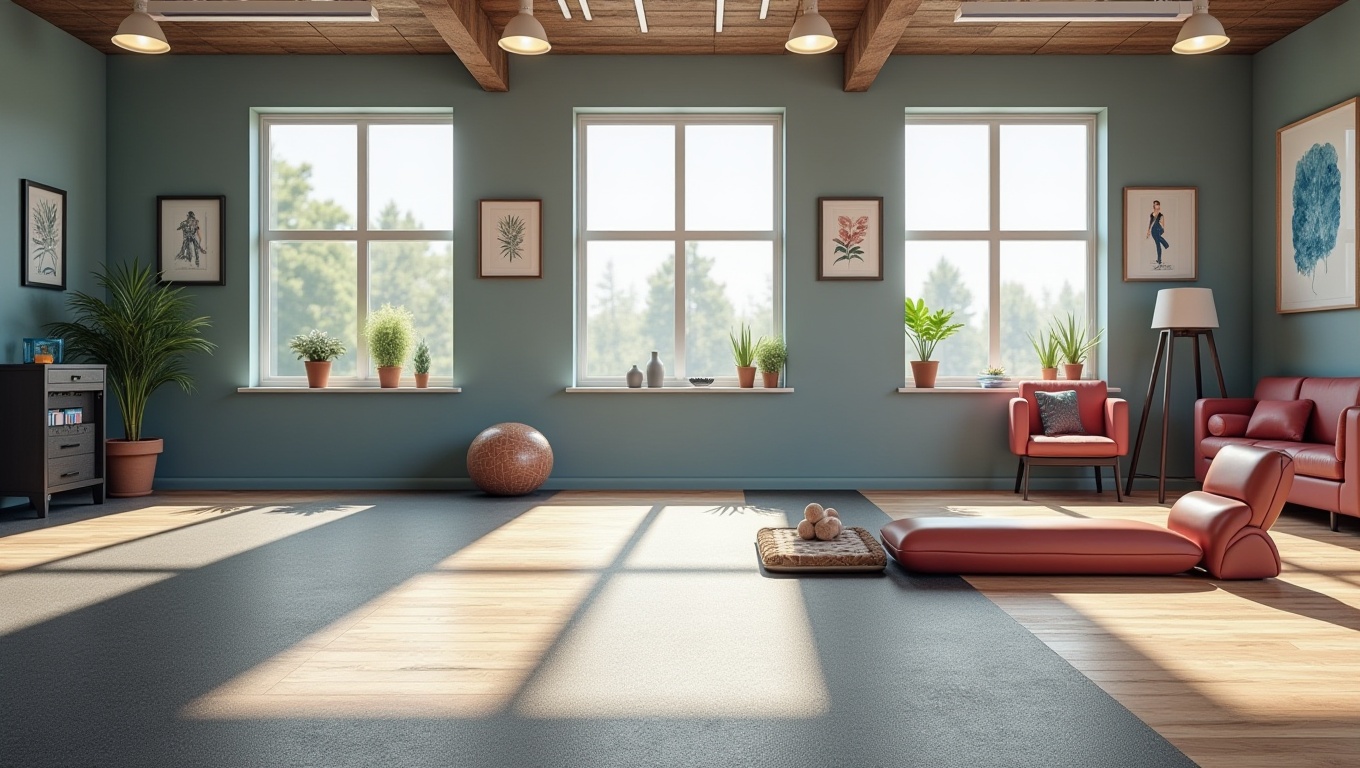 Pros and Cons of Flooring
Pros and Cons of Flooring
Let’s break it all down, with no more surprises. Imagine buying a car without knowing its fuel efficiency.
Rubber Flooring :
Is Rubber Flooring Durable Enough for Heavy Weightlifting?
- Exceptional Durability27: Rubber flooring is specifically designed to withstand the impact of heavy weights, protecting both your equipment and your subfloor.
- Thickness Matters: Thicker rubber flooring (8mm or more) is recommended for heavy weightlifting areas.
Does Rubber Flooring Provide Good Shock Absorption28 for High-Impact Activities?
- Joint Protection: Rubber’s natural elasticity provides excellent shock absorption, reducing stress on your joints during high-impact exercises like jumping and running.
- Impact Reduction: This helps to minimize the risk of injuries and allows for more comfortable workouts.
Is Rubber Flooring Easy to Clean and Maintain?
- Simple Cleaning Routine: Rubber flooring is generally easy to clean with regular sweeping or vacuuming and occasional mopping with a mild detergent.
- Stain Resistance: It’s also resistant to most stains, making it a practical choice for a workout environment.
Does Rubber Flooring Have an Unpleasant Odor?
- Initial Odor: Some rubber flooring, especially recycled rubber, may have a noticeable odor when first installed.
- Off-Gassing: This odor typically dissipates over time with proper ventilation. Choosing low-VOC or virgin rubber can minimize this issue.
Is Rubber Flooring a Cost-Effective Option29 for Home Gyms?
- Long-Term Investment: While rubber flooring can be more expensive upfront compared to some other options, its durability and longevity often make it a cost-effective choice in the long run.
- Reduced Replacement Costs: You’re less likely to need to replace it frequently, saving you money over time.
| Feature | Pro | Con |
|---|---|---|
| Durability | Extremely durable, withstands heavy weights and impact. | Can be heavy and difficult to move. |
| Shock Absorption | Excellent shock absorption, protects joints and subfloor. | |
| Maintenance | Easy to clean with sweeping and mopping. | Can retain odors if not cleaned properly. |
| Odor | Some rubber flooring has a strong odor initially, which fades over time. | The odor can be unpleasant for some people. |
| Cost | Can be more expensive than other options upfront. | May not be the most budget-friendly option for large spaces. |
Foam Tiles :
Are Foam Tiles Comfortable Enough for Floor Exercises Like Yoga and Pilates?
- Cushioning and Support30: Foam tiles provide a soft, cushioned surface that’s comfortable for floor exercises, yoga, and Pilates, offering good support and reducing pressure on joints.
- Traction: They also offer good traction, preventing slips and providing stability.
Do Foam Tiles Provide Enough Support for Weight Training?
- Limited Support: While foam tiles offer some cushioning, they are not ideal for heavy weight training. The weight can compress the foam, reducing its effectiveness and potentially damaging the tiles.
- Light Weights Only: They are better suited for bodyweight exercises or light weight training.
Are Foam Tiles Easy to Install and Replace?
- Interlocking Design31: Foam tiles typically feature an interlocking design, making them incredibly easy to install. You simply connect the tiles like puzzle pieces.
- Easy Replacement: If a tile becomes damaged, you can easily replace it without having to redo the entire floor.
Do Foam Tiles Dent Easily Under Heavy Equipment?
- Compression: Foam tiles are susceptible to denting and compression under heavy equipment or furniture.
- Permanent Marks: These dents can be permanent, affecting the appearance and functionality of the flooring.
Are Foam Tiles a Budget-Friendly Option for Home Gyms?
- Affordability32: Foam tiles are generally the most affordable home gym flooring option, making them a great choice for those on a tight budget.
- Cost-Effective for Small Spaces: They are particularly cost-effective for smaller workout areas.
| Feature | Pro | Con |
|---|---|---|
| Comfort | Very comfortable for floor exercises and stretching. | Not ideal for high-impact activities or heavy weightlifting. |
| Support | Provides some support, but not enough for heavy weights. | Can compress and lose shape over time under heavy use. |
| Installation | Very easy to install and replace due to interlocking design. | May require replacement more frequently than other flooring types. |
| Dents | Can dent easily under heavy equipment or furniture. | Dents can be permanent and affect the appearance. |
| Cost | Generally very affordable, making it a good budget option. |
Carpet Tiles :
Do Carpet Tiles Provide a Comfortable Surface for Cardio Workouts?
- Cushioning and Warmth: Carpet tiles offer a softer, more comfortable surface for cardio workouts compared to harder flooring options like rubber or vinyl.
- Reduced Impact: They provide some cushioning, which can help to reduce impact on your joints.
Are Carpet Tiles Easy to Clean and Maintain in a Home Gym Setting?
- Easier than Broadloom: Carpet tiles are easier to clean and maintain than traditional wall-to-wall carpeting.
- Stain Resistance: However, they can still be susceptible to staining from sweat and spills. Regular vacuuming and prompt spot cleaning are essential.
Do Carpet Tiles Absorb Sound Effectively?
- Noise Reduction33: Carpet tiles are excellent at absorbing sound, helping to reduce noise levels during workouts, which can be beneficial if your home gym is located near living areas.
- Quieter Workouts: This creates a quieter and more enjoyable workout environment.
Are Carpet Tiles Suitable for Areas with Heavy Equipment?
- Compression and Damage: Carpet tiles are not ideal for areas with heavy equipment, as the weight can compress the fibers and potentially damage the tiles.
- Limited Protection: They also offer limited protection for your subfloor from dropped weights.
Do Carpet Tiles Offer a Wide Variety of Styles and Colors?
- Design Versatility34: Carpet tiles are available in a wide range of colors, patterns, and textures, allowing you to customize the look of your home gym.
- Creating Zones: You can use different colors or patterns to create designated workout zones.
| Feature | Pro | Con |
|---|---|---|
| Comfort | Provides a comfortable surface for cardio and general fitness. | Not ideal for exercises requiring a firm, stable surface. |
| Maintenance | Easier to clean than wall-to-wall carpet, but can still stain. | Requires regular vacuuming and occasional deep cleaning. |
| Sound Absorption | Good sound absorption, reducing noise levels during workouts. | |
| Heavy Equipment | Not suitable for areas with heavy equipment, as it can compress. | Can be damaged by dropped weights or heavy machinery. |
| Style Variety | Available in a wide range of colors, patterns, and textures. | May not offer the same level of durability as other gym flooring options. |
Vinyl Flooring :
Is Vinyl Flooring Waterproof and Suitable for Basement Gyms?
- Moisture Resistance35: Vinyl flooring is highly water-resistant, making it an excellent choice for basement gyms or areas prone to moisture.
- Prevents Mold and Mildew: This helps to prevent the growth of mold and mildew, which can be a concern in damp environments.
Does Vinyl Flooring Offer Good Slip Resistance for Safety?
- Slip-Resistant Options36: Many vinyl flooring options are specifically designed with slip-resistant surfaces, providing added safety during workouts.
- Texture and Finish: Look for vinyl flooring with a textured finish for enhanced grip.
Is Vinyl Flooring Easy to Install and Maintain?
- Simple Installation: Vinyl flooring is relatively easy to install, with options for click-lock, glue-down, or loose-lay installation.
- Easy Cleaning: It’s also easy to clean and maintain, requiring only regular sweeping or vacuuming and occasional mopping.
Does Vinyl Flooring Come in a Variety of Styles and Patterns?
- Versatile Design Options: Vinyl flooring is available in a vast array of styles and patterns, including options that mimic the look of wood, stone, or tile.
- Aesthetic Appeal: This allows you to create a visually appealing home gym that complements your personal style.
Is Vinyl Flooring a Durable Option for High-Traffic Home Gyms?
- Durability and Longevity37: Vinyl flooring is generally durable and able to withstand high traffic and moderate use.
- Not for Extreme Weightlifting: However, it’s not as durable as rubber for heavy weightlifting and may be susceptible to damage from dropped weights
| Feature | Pro | Con |
|---|---|---|
| Cushion | Offers excellent cushioning and shock absorption. | May not be suitable for all types of exercises, particularly those involving heavy weights. |
| Durability | Durable. | Need more maintain. |
| Cleaning | Need use Vacuum and cleaning agent | Need more time to clean. |
How Much Does Home Gym Flooring Cost?
Worried that creating your dream home gym will break the bank?
Home gym flooring costs38 vary widely. Rubber can range from a few dollars to over ten dollars per square foot39. Foam is generally cheaper40, while vinyl and carpet fall in the middle.
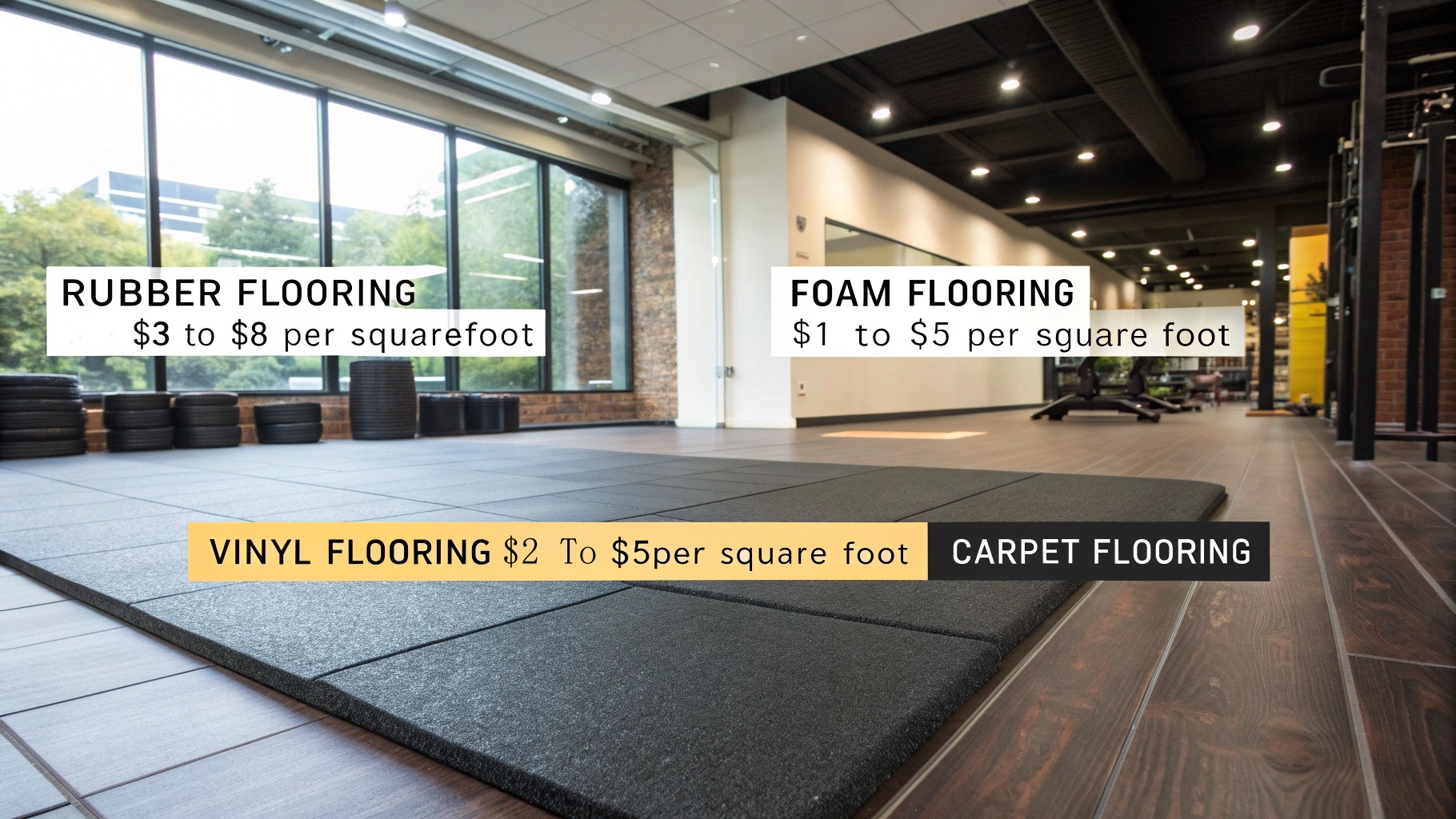 Home Gym Flooring Cost
Home Gym Flooring Cost
Let’s get more specific about pricing, so you can budget effectively. Think of it like planning a vacation. You need to know the costs before you book.
What Is the Average Cost of Rubber Flooring per Square Foot?
- Price Range: The average cost of rubber flooring41 can range from $2 to $10 or more per square foot, depending on the thickness, quality, and whether it’s in rolls or tiles.
- Factors Affecting Cost: Thicker rubber, virgin rubber, and specialized features (like color flecks) will increase the cost.
How Much Do Foam Tiles Typically Cost for a Home Gym?
- Most Affordable Option: Foam tiles are typically the most affordable home gym flooring option, ranging from $1 to $5 per square foot.
- Cost-Effective for Small Areas42: They are particularly cost-effective for smaller workout spaces or for creating specific zones within a larger gym.
What Is the Price Range for Carpet Tiles Suitable for a Gym?
- Mid-Range Pricing43: Carpet tiles suitable for a gym generally fall in the mid-range price category, costing between $2 and $8 per square foot.
- Factors Affecting Cost44: The quality of the carpet fibers, the backing material, and the design can all influence the price.
How Much Does Vinyl Flooring Cost for a Home Gym Installation?
- Mid-Range Option: Vinyl flooring is also a mid-range option, with costs typically ranging from $2 to $7 per square foot.
- Variety of Styles: The wide variety of styles45 and patterns available in vinyl flooring can affect the price.
Are There Additional Costs to Consider, Like Underlayment or Installation Fees?
- Underlayment: Some flooring types may require an underlayment46, which adds to the overall cost.
- Adhesive: If you’re using glue-down flooring, you’ll need to factor in the cost of adhesive47.
- Installation Fees: If you hire a professional for installation, labor costs will be an additional expense.
- Tools: Depending on DIY or not, you need consider tool cost.
How to Get a Quote for Rubber Gym Flooring from a Chinese Manufacturer?
- Direct Contact: Contact Chinese manufacturers48 directly, like BYFIT ([email protected]), to request a quote.
- Provide Specifications: Be specific about your requirements, including the type of rubber, thickness, quantity, and any desired customization.
- Shipping cost: Need to confirm shipping cost49.
What Factors Affect the Overall Cost of Home Gym Flooring?
- Material Type: The type of flooring material50 you choose is the primary factor influencing cost.
- Thickness and Quality: Thicker, higher-quality materials51 will generally be more expensive.
- Brand and Features: Certain brands and specialized features52 (like color flecks or interlocking designs) can also add to the cost.
- Area Size: Larger area needs more cost.
| Flooring Type | Cost per Square Foot (Estimate) | Additional Costs |
|---|---|---|
| Rubber | $2 – $10+ | Underlayment (optional), adhesive (optional) |
| Foam | $1 – $5 | Adhesive (optional) |
| Carpet | $2 – $8 | Underlayment (recommended), adhesive (optional) |
| Vinyl | $2 – $7 | Underlayment (optional), adhesive (optional) |
| Turf | $2 – $8 | adhesive (optional) |
How to Install Home Gym Flooring?
Worried about a complicated installation process?
Installation difficulty varies. Foam tiles53 are the easiest, often just interlocking. Rubber rolls54 can be heavy and require more effort. Vinyl55 can be click-lock or glue-down.
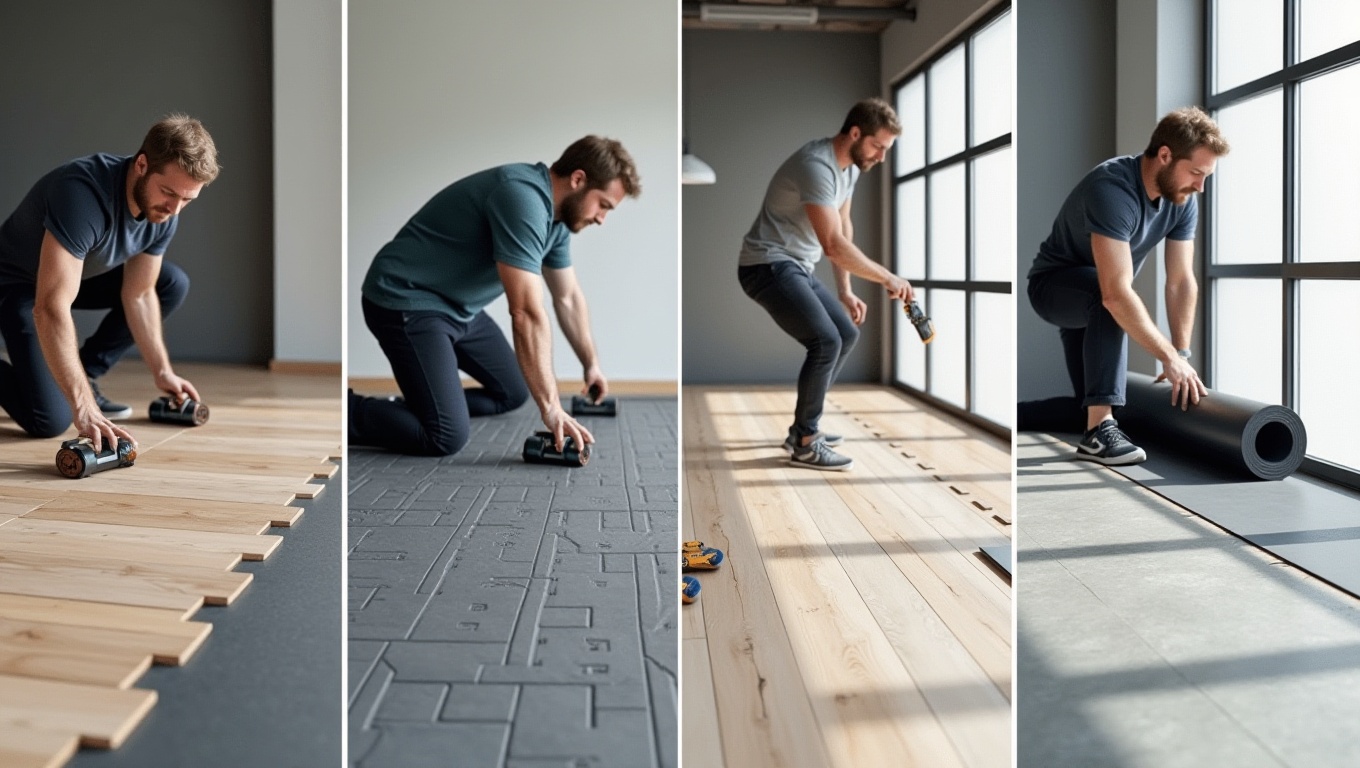 Home Gym Flooring Installation
Home Gym Flooring Installation
Let’s break down the installation process, step-by-step. It’s like assembling furniture. Some pieces are easier than others.
Can I Install Rubber Flooring Myself, or Should I Hire a Professional?
- DIY Considerations: Installing rubber flooring yourself can save on labor costs, but it depends on your skills, the type of rubber flooring (rolls vs. tiles), and the size of your gym.
- Professional Installation: For large areas, heavy rolls, or complex layouts, professional installation is recommended.
What Tools and Materials Do I Need to Install Foam Tiles?
- Minimal Tools: Installing foam tiles usually requires minimal tools, often just a utility knife for cutting tiles to fit around corners or obstacles.
- Straight Edge: A straight edge can help ensure clean, straight cuts.
How Do I Prepare the Subfloor Before Installing Carpet Tiles?
- Clean and Level: Before installing carpet tiles, it’s crucial to ensure your subfloor is clean, dry, and level.
- Remove Debris: Remove any dirt, debris, or old adhesive residue.
- Leveling Compound: If the subfloor is uneven, use a leveling compound to create a smooth surface.
What Is the Best Way to Install Vinyl Flooring in a Home Gym?
- Follow Manufacturer’s Instructions: The best way to install vinyl flooring is to carefully follow the manufacturer’s instructions, as installation methods can vary depending on the specific product (click-lock, glue-down, or loose-lay).
- Acclimation: Allow the vinyl flooring to acclimate to the room temperature for the recommended time before installation.
Are There Any Specific Installation Tips for Rubber Flooring Rolls vs. Tiles?
- Rubber Rolls: Rubber rolls are heavier and more difficult to handle than tiles. They may require multiple people for installation.
- Rubber Tiles: Rubber tiles are easier to manage and install, especially for DIY projects. Their interlocking design simplifies the process.
How Do I Cut Rubber Flooring to Fit Around Corners and Obstacles?
- Sharp Utility Knife: Use a sharp utility knife and a straight edge to cut rubber flooring.
- Multiple Passes: Make multiple shallow passes with the knife rather than trying to cut through the rubber in one go.
- Measure Twice Cut One: Measure and mark the cutting lines carefully before making any cuts.
Do I Need to Use Adhesive When Installing Home Gym Flooring?
- Adhesive Requirements: Whether or not you need to use adhesive depends on the specific type of flooring and the manufacturer’s recommendations.
- Interlocking Tiles: Interlocking tiles often don’t require adhesive.
- Glue-Down Flooring: Glue-down flooring obviously requires adhesive.
- Loose-Lay Flooring: Some flooring can be loose-laid, but adhesive may still be recommended for added stability.
| Flooring Type | Installation Method | Difficulty | Tools Needed |
|---|---|---|---|
| Rubber (Tiles) | Interlocking | Easy | Utility knife, straight edge, (maybe) rubber mallet |
| Rubber (Rolls) | Glue-down or loose lay | Moderate | Utility knife, straight edge, adhesive (if needed) |
| Foam | Interlocking | Easy | Utility knife |
| Carpet | Glue-down or tape-down | Moderate | Utility knife, carpet tape or adhesive |
| Vinyl | Click-lock or glue-down | Easy/Moderate | Utility knife, tapping block (for click-lock) |
How to Maintain and Clean Your Home Gym Flooring?
Worried about keeping your gym floor clean and hygienic?
Regular cleaning is key! Sweep or vacuum frequently. Mop rubber and vinyl with a mild detergent. Carpet tiles may require spot cleaning or professional cleaning.
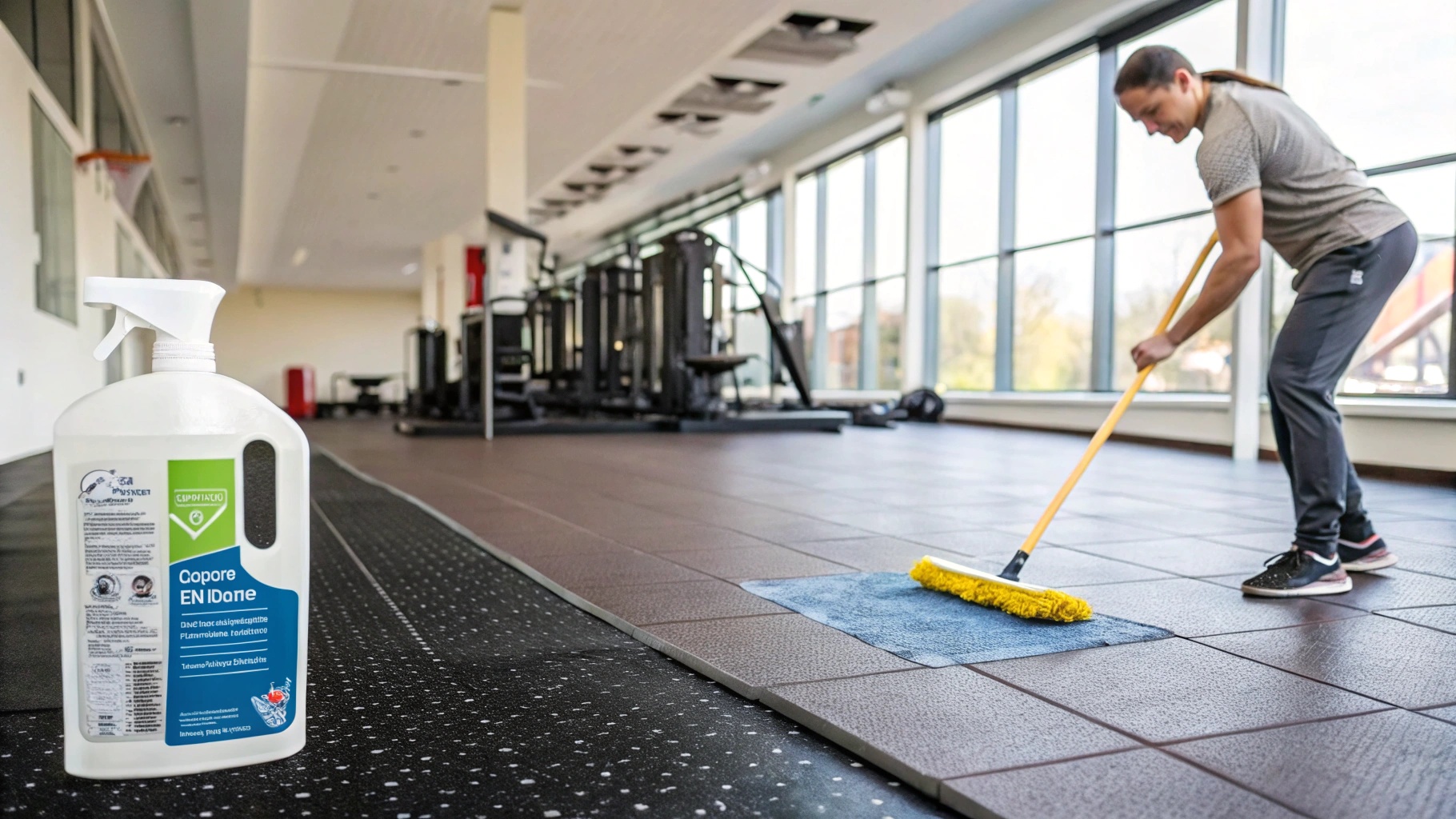 Home Gym Flooring Maintenance
Home Gym Flooring Maintenance
It’s like taking care of your car. Regular maintenance keeps it running smoothly.
What Is the Best Way to Clean Rubber Flooring to Prevent Odor and Bacteria?
- pH-Neutral Cleaners: Use a pH-neutral cleaner specifically designed for rubber flooring. Avoid harsh chemicals or bleach, which can damage the rubber.
- Regular Mopping: Mop the floor regularly with the cleaner and water, then rinse with clean water.
- Ventilation: Ensure good ventilation to help the floor dry quickly and prevent odor buildup.
How Often Should I Clean My Home Gym Flooring?
- Frequency: Clean your home gym flooring at least once a week, or more frequently if you use it heavily or sweat a lot.
- Spills: Clean up any spills immediately to prevent staining and bacterial growth.
Can I Use Regular Household Cleaners on Foam Tiles?
- Mild Cleaners: You can usually use mild household cleaners diluted with water on foam tiles.
- Avoid Harsh Chemicals: Avoid harsh chemicals or abrasive cleaners, which can damage the foam.
- Test in an Inconspicuous Area: Always test any cleaner in an inconspicuous area first to ensure it doesn’t discolor or damage the tiles.
How Do I Remove Stains from Carpet Tiles in My Home Gym?
- Blot Immediately: Blot up any spills immediately with a clean cloth. Don’t rub, as this can spread the stain.
- Carpet Cleaner: Use a carpet cleaner specifically designed for the type of stain.
- Professional Cleaning: For stubborn stains, consider professional carpet cleaning.
What Is the Best Way to Maintain the Appearance of Vinyl Flooring?
- Regular Cleaning: Regular sweeping or vacuuming and occasional mopping with a mild detergent will help maintain the appearance of vinyl flooring.
- Occasional Polishing: You can occasionally use a vinyl floor polish to restore shine and protect the finish.
Are There Any Special Cleaning Products Recommended for Rubber Gym Flooring?
- pH-Neutral Cleaners: pH-neutral cleaners are specifically recommended for rubber gym flooring. These cleaners are gentle and effective, preventing damage to the rubber.
- Avoid Oil-Based Cleaners: Avoid oil-based cleaners, which can make the rubber slippery.
How Can I Prevent Damage to My Home Gym Flooring?
- Use Mats: Place mats under heavy equipment to protect the flooring from dents and scratches.
- Lift, Don’t Drag: Lift equipment instead of dragging it across the floor.
- Avoid Sharp Objects: Be careful with sharp objects that could puncture or tear the flooring.
- Regularly check:Regularly check the equipments.
| Flooring Type | Cleaning Method | Frequency |
|---|---|---|
| Rubber | Sweep/vacuum, mop with pH-neutral cleaner | Weekly, or as needed |
| Foam | Sweep/vacuum, spot clean with mild detergent | Weekly, or as needed |
| Carpet | Vacuum regularly, spot clean stains promptly | Weekly, deep clean periodically |
| Vinyl | Sweep/vacuum, mop with mild detergent | Weekly, or as needed |
| Turf | Vacuum , cleaning agent | Weekly, or as needed |
What Are Some Creative Home Gym Flooring Ideas?
Bored with the idea of a plain, basic gym floor?
Get creative! Use different colored tiles to create zones. Mix materials for visual interest. Add motivational quotes or designs.
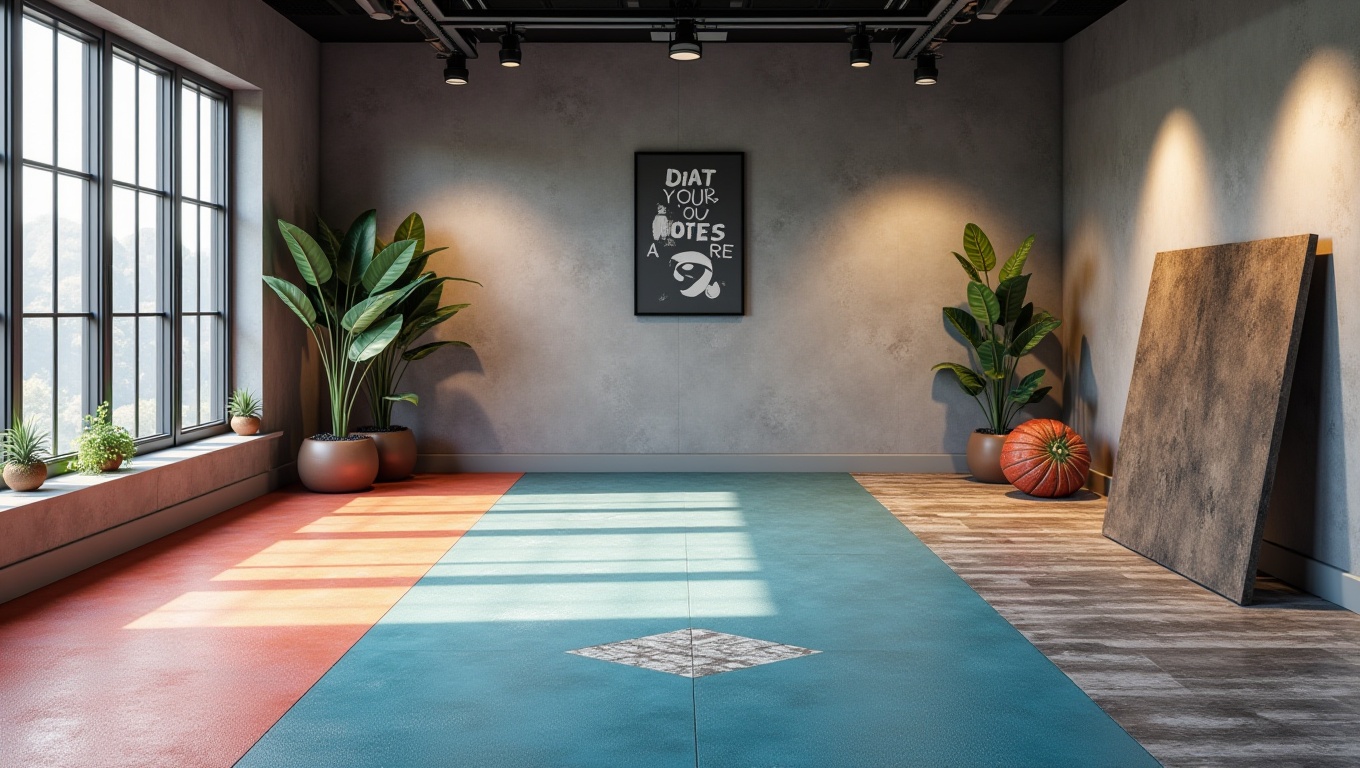 Creative Home Gym Flooring
Creative Home Gym Flooring
This is your chance to personalize your space. Think of it like decorating your living room. You want it to reflect your style.
Can I Create Custom Designs with Rubber Flooring Tiles?
- Color Variety: Yes, you can create custom designs with rubber flooring tiles by using different colors. Interlocking tiles make it easy to mix and match colors to create patterns, borders, or logos.
- Geometric Patterns: Create geometric patterns or designate specific workout zones.
How Can I Use Different Colors of Foam Tiles to Define Workout Zones?
- Visual Separation: Using different colors of foam tiles is a great way to visually define different workout zones in your home gym.
- Cardio vs. Weights: For example, you could use one color for a cardio area and another color for a weightlifting area.
- Yoga/Stretching Zone: This helps to organize your space and can also be visually appealing.
Can I Mix and Match Different Types of Flooring for a Unique Look?
- Combining Materials: Yes, you can mix and match different types of flooring for a unique look and to accommodate different activities.
- Level Transitions: However, it’s crucial to ensure that the transitions between different flooring types are level and safe to prevent tripping hazards.
- Example: You might use rubber flooring for a weightlifting area and foam tiles for a yoga or stretching area.
Are There Any Inspirational Home Gym Flooring Designs I Can See?
- Online Resources: Search online for "home gym flooring ideas" or "home gym designs" to find numerous examples and inspiration.
- Social Media: Platforms like Pinterest and Instagram are great sources for visual ideas.
How Can I Incorporate My Gym’s Branding into the Flooring Design?
- Custom-Printed Tiles: If you have a personal brand or logo, you can incorporate it into your flooring design using custom-printed tiles.
- Color Schemes: Choose colors that match your brand’s color scheme.
- Contact with Supplier: Contact the supplier to confirm if they offer logo print service.
Can I use Turf Flooring in the home gym?
- Specialized Use: Yes, Turf is good for home gym.
- Looks: This can create a unique and functional workout space.
Can I Use Bold Colors or Patterns to Create a Motivating Workout Space?
- Visual Stimulation: Yes, using bold colors or patterns can create a visually stimulating and motivating workout environment.
- Personal Preference: Choose colors and patterns that you find energizing and inspiring.
Where Can You Buy High-Quality Home Gym Flooring?
Overwhelmed by the number of suppliers, and unsure who to trust?
You can find home gym flooring online, at home improvement stores, and from specialized fitness equipment retailers. Look for reputable brands and read reviews.
For Rubber Gym Flooring , You can contact with BYFIT.
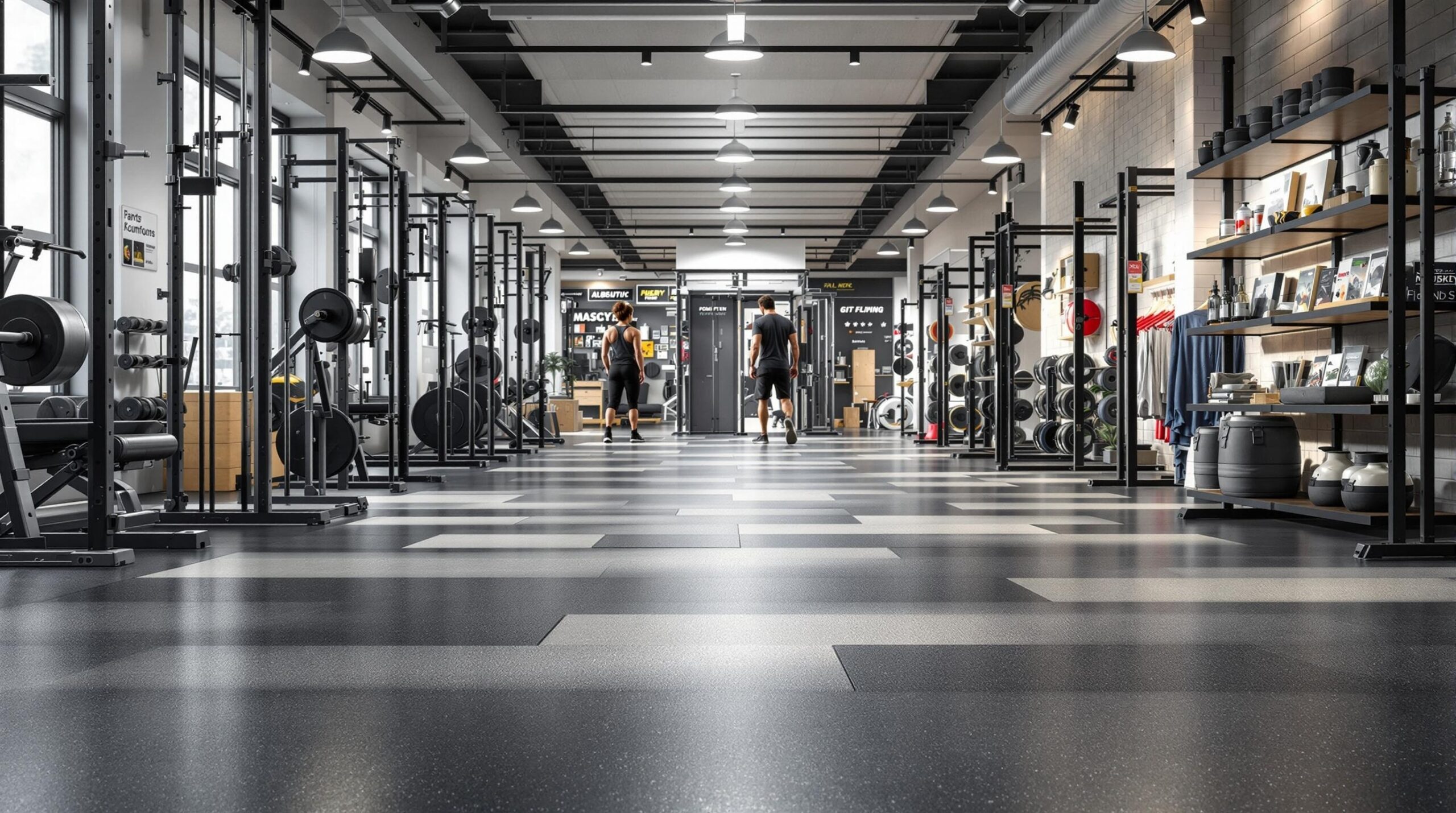 Where to Buy Home Gym Flooring
Where to Buy Home Gym Flooring
Think of it like finding a good restaurant. You check reviews before you go.
Which Online Retailers Offer the Best Selection of Home Gym Flooring?
- Wide Variety: Many online retailers offer a wide selection of home gym flooring options, often with competitive prices and convenient shipping.
- Examples: Amazon, specialized fitness equipment websites, and home improvement store websites.
Are There Any Reputable Chinese Manufacturers of Rubber Gym Flooring?
- Direct Sourcing: Yes, there are many reputable Chinese manufacturers of rubber gym flooring, like BYFIT ([email protected]).
- Cost Savings: Buying directly from a manufacturer can often offer cost savings.
- Customization Options: Some manufacturers also offer customization options.
What Should I Look for When Choosing a Home Gym Flooring Supplier?
- Experience and Reputation: Choose a supplier with a proven track record and positive customer reviews.
- Product Quality: Look for high-quality materials and manufacturing processes.
- Customer Service: Opt for a supplier that offers good customer service and support.
- Warranty: Check warrant.
Can I Read Reviews of Different Home Gym Flooring Brands?
- Online Reviews: Yes, you can read reviews of different home gym flooring brands and products on various websites, including retailer websites, fitness forums, and consumer review sites.
- Informed Decisions: Reviews can provide valuable insights into the quality, durability, and performance of different flooring options.
Do Any Suppliers Offer Warranties on Their Home Gym Flooring Products?
- Warranty Coverage: Yes, many reputable suppliers offer warranties on their home gym flooring products, covering defects in materials and workmanship.
- Warranty Terms: Check the specific terms and conditions of the warranty before making a purchase.
How Can I Get Samples of Home Gym Flooring Before Making a Purchase?
- Requesting Samples: Contact the supplier or manufacturer and request samples of the flooring materials you’re interested in.
- Testing and Evaluation: Samples allow you to see and feel the material firsthand, assess its quality, and test its suitability for your needs.
- Most suppliers offer sample:Most suppliers offer sample.
What Certifications Should I Look for in a High-Quality Rubber Flooring Manufacturer?
- ISO 9001: ISO 9001 is a widely recognized international standard for quality management systems. It indicates that the manufacturer has implemented processes to ensure consistent product quality.
- Other Certifications: Other relevant certifications may include environmental certifications (like ISO 14001) or product-specific certifications.
Conclusion
Choosing the right flooring is a big decision, but it doesn’t have to be. Think of needs and budget. Then make your home gym a safe place. Happy lifting!
-
This resource will provide you with essential features to look for, ensuring you make an informed choice for your gym flooring. ↩
-
Understanding how different exercises impact flooring choices can help you select the most suitable option for your workout routine. ↩
-
Explore this link to discover expert recommendations and insights on selecting the ideal flooring for your home gym. ↩
-
Explore this link to discover flooring solutions that enhance performance and protect your joints during high-impact workouts. ↩ ↩
-
This resource will guide you in selecting durable flooring that can handle heavy weights and ensure safety during your lifts. ↩
-
Explore the advantages of Rubber Flooring, including durability and longevity, to make an informed choice for your space. ↩
-
Discover how Foam Tiles stack up against other flooring types, especially in terms of cost and replacement frequency. ↩
-
Learn about the versatility and durability of Vinyl Flooring to see if it’s the right fit for your exercise needs ↩
-
Understanding how to measure your space accurately is crucial for a successful flooring project. Explore this resource for expert tips. ↩
-
Room shape significantly influences flooring decisions. Discover insights on how to choose the right flooring based on your room’s layout. ↩
-
Choosing the right flooring for small spaces can enhance aesthetics and functionality. Check out this link for tailored recommendations. ↩
-
Explore this link to discover detailed comparisons and recommendations for various flooring types suitable for home gyms. ↩
-
Learn how shock absorption can enhance your workout experience and protect your joints. ↩
-
Discover effective cleaning methods to maintain your rubber flooring and prolong its lifespan. ↩
-
Explore the advantages of foam tiles for flooring, including comfort and ease of installation, to enhance your space effectively. ↩
-
Learn about the durability comparison between foam tiles and rubber flooring to make an informed choice for your needs. ↩
-
Explore this link to understand how carpet tiles enhance comfort and reduce noise, making them ideal for fitness activities. ↩
-
Learn about sound-absorbing materials and their effectiveness in flooring solutions, including carpet tiles. ↩
-
Explore the advantages of water-resistant flooring to enhance your home gym’s functionality and maintenance. ↩
-
Discover top slip-resistant flooring choices to ensure safety during workouts in your home gym. ↩
-
Explore this link to understand how wood flooring can enhance your workout space while considering its limitations. ↩
-
Learn about the potential risks and alternatives for heavy weightlifting to protect your flooring and ensure safety. ↩
-
Discover various light workout options that can be effectively performed on wood flooring, maximizing its aesthetic appeal. ↩
-
Understanding the various flooring types helps you make an informed decision for your space. ↩
-
Explore the benefits and drawbacks of rubber flooring to see if it’s right for your needs. ↩
-
Learn about foam flooring’s comfort and potential issues to determine if it’s suitable for your home. ↩
-
Explore how exceptional durability in rubber flooring can protect your equipment and enhance your workout space. ↩
-
Learn about the importance of shock absorption in rubber flooring for joint protection during intense workouts. ↩
-
Discover why rubber flooring can be a smart long-term investment for your home gym despite initial costs. ↩
-
Explore how cushioning and support in foam tiles enhance comfort and safety during yoga and Pilates sessions. ↩
-
Learn about the advantages of interlocking designs in foam tiles for quick and hassle-free installation. ↩
-
Discover why foam tiles are a budget-friendly choice for home gyms, especially for those with limited space. ↩
-
Learn about the sound-absorbing qualities of carpet tiles and how they can create a quieter workout environment. ↩
-
Discover the various styles and colors of carpet tiles that can help you customize your home gym aesthetic. ↩
-
Explore the benefits of moisture resistant vinyl flooring to understand why it’s ideal for basement gyms and damp areas. ↩
-
Discover the best slip-resistant vinyl flooring options to ensure safety during workouts in your gym. ↩
-
Learn about the durability of vinyl flooring in high-traffic areas to make an informed choice for your home gym. ↩
-
Understanding the average costs can help you budget effectively for your dream home gym. ↩
-
Exploring this will give you insights into how to choose the best flooring within your budget. ↩
-
Discover the benefits of foam flooring and how it can save you money while providing comfort. ↩
-
Understanding the factors that influence the cost can help you make informed decisions when purchasing rubber flooring. ↩
-
Learn how to efficiently use space and budget with cost-effective flooring solutions for your gym area. ↩
-
Understanding mid-range pricing can help you make informed decisions about quality and budget for gym flooring. ↩
-
Exploring these factors will provide insights into how to choose the best carpet tiles for your gym’s needs and budget. ↩
-
This link will provide insights into how different styles and patterns can influence the cost of vinyl flooring, helping you make an informed choice. ↩
-
Understanding underlayment can help you make informed decisions about flooring choices and costs. ↩
-
Exploring adhesive options ensures you choose the best product for a durable flooring installation. ↩
-
Exploring this resource will provide insights on effective communication and negotiation with manufacturers in China. ↩
-
Understanding shipping costs is crucial for budgeting; this resource will help you navigate the complexities of international shipping. ↩
-
Explore this link to understand various flooring materials and how they impact your budget effectively. ↩
-
Discover insights on the value of investing in higher-quality flooring materials for durability and aesthetics. ↩
-
Learn about specialized features in flooring that can enhance your space and justify the investment. ↩
-
Explore the advantages of foam tiles, which are known for their ease of installation and comfort, making them ideal for home gyms. ↩
-
Learn the proper techniques for installing rubber rolls, which can be heavy but provide excellent durability and support for gym spaces. ↩
-
Discover the various vinyl flooring options and their installation methods, including click-lock and glue-down, to find the best fit for your needs. ↩
